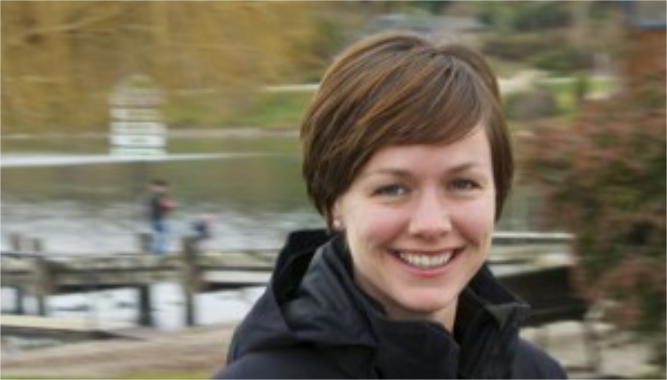Parting Words

SMM: I can hardly believe it’s been four years since I became a contributing editor for the Evolutionary Anthropology Society. In that time, I’ve held four positions, had two children, and moved house (including internationally) five times. My CV says I’ve authored, edited, or coedited some 15 columns during that period – an average of around 4 per year, most produced during the first two years of my tenure as editor. Overall, it’s been a whirlwind of experiences, some more enjoyable than others, but all informative. What can I pull from the mayhem that might be worth passing on to the readers of this column?
First, evolutionary anthropology (EA) is an evolving (!) field. Increasingly interdisciplinary, the boundaries of what constitutes EA are expanding. Cultural evolutionary theory is now a mainstream component of courses in EA; the historical division between human behavioral ecology and evolutionary psychology would seem to have been superseded by broader debates between EA and mainstream biological (aka physical) anthropology; quantitative approaches are expanding; the use of economic games and social network analysis is now routine in dissertations; skepticism with respect to the validity of these oncetoohottodispute methods is now on the rise; applications of evolutionary anthropology to world problems have emerged in light of pushes for evidencebased solutions. All of this is to make the point that the toolkits required by proficient students of EA are now highly diverse. Established faculty and eager students may wish to consider taking on topics on a path less beaten by mainstream EA and to consider careers that allow for this expansion in scope.
Indeed, the trend in interdisciplinarity means that students of EA must be creative in pursuing their careers – graduate and ongoing – in academia. The current leading units in EA (as will be profiled by the incoming editors) are those that have been proactive in seeking to incorporate novel perspectives. The dizzying array of new perspectives means that mentors cannot possibly be aware of all of the opportunities available to their students or the venues in which these are publicized. Instead, students must, themselves, stay abreast of novel currents. As discussed in a previous column, this might mean applying to jobs with titles such as “Clinical Assistant Professor”, picking up additional degrees in fields such as public health, biostatistics, or education, and searching for jobs and funding opportunities through alternate sources (e.g., the “wikis”). There are now many routes to success in evolutionary anthropology, which means expanding opportunities, but equally many ways to slip through the cracks if a student cleaves too strongly to a traditional trajectory.
The final item that seems to me to be worth emphasizing is that postdocs and publications are increasingly required to land one’s first permanent gig. If a student is intent on a career in academia, then it is a good idea to strategize around these issues as early as possible. Part of that strategy is one of weathering momentary failures. Many recent publications have characterized the “successful” as individuals who continue on in the face of adversity. Thankfully, the failures of academia are often only known to the academic and a few close colleagues. Until you’re working on your tenure packet, no one knows how many grants you didn’t get or how many rejections you received en route from Science to your ultimate publication in another journal. All they see are the lines on your CV that demonstrate success.

AHB: I am thankful for the brief experience I have had as a cocontributing editor to this column. I can say it has enhanced my membership in EAS, helping me stay better in tune with the work of my colleagues and consider ways this column could help broadcast their contributions to anthropology. I have been a member of EAS since my first year of graduate school back in 2005. As Siobhán points out, the scope of evolutionary anthropology has grown immensely in the last decade. What has remained stable in this rapidly changing environment, however, has been the egalitarianism and collegiality of the EAS membership. As a young graduate student I remember being thrilled to discuss my poster on dictator game play and coalitionary behavior with some of the people who literally wrote the book(s!) on human behavioral ecology. What truly struck me later, though, was that I was never made to feel less than a peer even though I was quite junior to many of the people I nervously chatted with in the meeting rooms and halls of conference centers (and less nervously had beers with later). Indeed, the EAS board has always made it a policy to include a balanced mix of student, early career, and later career papers across our sessions—something I’ve heard is not common to all sections of the AAA.
The EAS culture has maintained, at least in my perception, an ethos that the best science comes from cooperation, both within and between academic generations. Perhaps this is because so many of us study how cooperation works, or because we spend our summers in societies more communal than our own, but in any case, such an ethos is especially admirable in the context of a highly competitive academic job market. Case in point, Siobhán’s excellent parting advice above is yet another example of EAS cooperative ethos, and the unique role this column can play in facilitating EAS members’ success at all levels.
SMM & AHB: Finally, we would like to thank the EAS for the opportunity to serve as its contributing editors. We welcome incoming editors Katie Starkweather and Melanie Martin and look forward to reading a set of interesting columns. v

